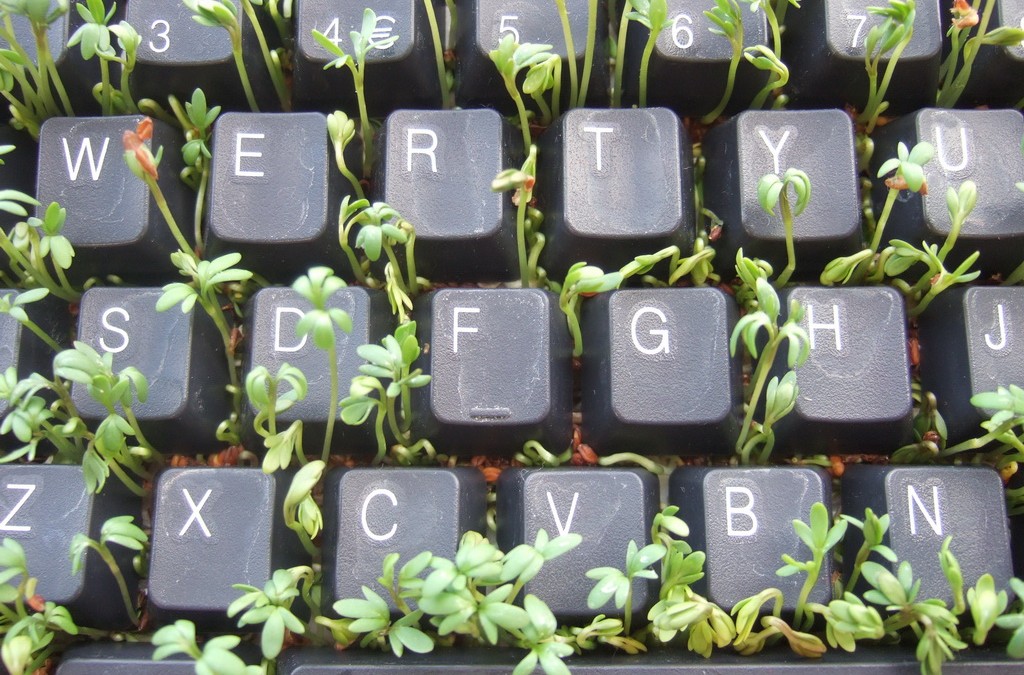
How to Properly Clean a Keyboard
One of the most common computer peripheral that requires thorough cleaning is the keyboard. Keyboards tend to require cleaning quite often due to the propensity of people to eat and drink while they type a document, play a game, or watch a movie. Regular collection of dust is compounded by the accumulation of crumbs and small fragments of all kinds of snacks. In most cases, spilling a drink on a keyboard is more disastrous than crumbs. Because keyboards have many crevices and the key-bed itself is difficult to reach, it is tough to properly clean.
The first step is to determine the best tools needed for cleaning a keyboard. This is vital to avoid physical damage to the keys and the board itself. Isopropyl alcohol is a good cleaning solution to use. Alcohol is typically good for disinfecting and cleaning many things, but more powerful kinds of alcohol should be avoided because they can remove the letter markings on the keys. Therefore, it is important to be sure Isopropyl alcohol is used. There are some electronic cleaning solutions that can also be used. These are typically found in electronics or office supply stores. Another good important item is canned air. A small, hand-held vacuum cleaner can be helpful but not necessary. It is noteworthy to emphasize a small vacuum because small hand held kinds usually have a more gentle suction. It is inadvisable to use a regular vacuum cleaner attachment. The final items needed are Q-tips, a lint-free cloth, and a thin knife or screwdriver. The lint free cloth can be any kind rag or wipe that does not shed lint. Paper towel can be used, but it is not ideal. A final item which can be helpful is a small brush with soft bristles like a small paintbrush.
The first step to cleaning a keyboard is focused on the keys themselves. Always be sure to unplug the keyboard first if it is wired. Holding the keyboard upright on its side, use canned air to blow the entire surface and between the keys to clear loose lint and crumbs. Be sure to keep the can of air upright at all times. Next take the lint-free rag or cloth and dampen it with the alcohol or cleaning solution. Avoid soaking the cloth and never pour or spray the cleaner onto the keyboard. Firmly but gently wipe off the surface of the keys. To clean the sides of the keys, use a Q-tip or the small brush dipped in alcohol and run it around each key. The brush can also be used in dusting of the keys.
The most difficult step in the cleaning process is key removal. Prior to key removal, take a picture of the keyboard or draw a layout of the keyboard. This is important for putting keys back on correctly. To remove the keys from a regular desktop keyboard, insert the thin knife or screwdriver under the corner of a key and very gently pop it up. This must be done with great care because the keys could break if too much force is used. If a key does not pop off willingly then reposition the tool, but do not force the key off. It is recommended not to do this when cleaning a laptop keyboard. The plastic clips attaching laptop keys to the board can break very easily, and it is difficult to reattach the keys. It is recommended to remove only letter and number keys and the F1 through F12 keys; larger keys like the SPACE bar and SHIFT keys are difficult to reattach. If the removed keys are still dirty, they can be washed separately with dish soap and must be air dried.
Once the keys are removed it is time to clean the key-bed. Use the canned air or the small vacuum to clear out the key bed of remaining debris and crumbs. Again use the lint-free cloth and alcohol to wipe out the key bed. Make sure the cloth is damp not soaked and dripping. The key bed can be wiped as much as is needed to remove what the vacuum and canned air failed to remove. Afterward, it is acceptable to dry it a bit with a dry cloth, but it should be allowed to fully air dry. Do not reattach the keys until both the keys and the key-bed are completely dry. Reattaching the keys is fairly easy as long as the sketch or picture of the keyboard layout is referred to. To reattach the keys place them on the correct contact point and press them firmly. They should snap on easily.
Although it may appear complicated, cleaning a keyboard is not as difficult as it seems. Of course, all cleaning should be done with care and regularly no matter how easy. Doing a full cleaning of a keyboard periodically is important. Preventing build up of debris keeps the typing and/or gaming experience fast and enjoyable.
